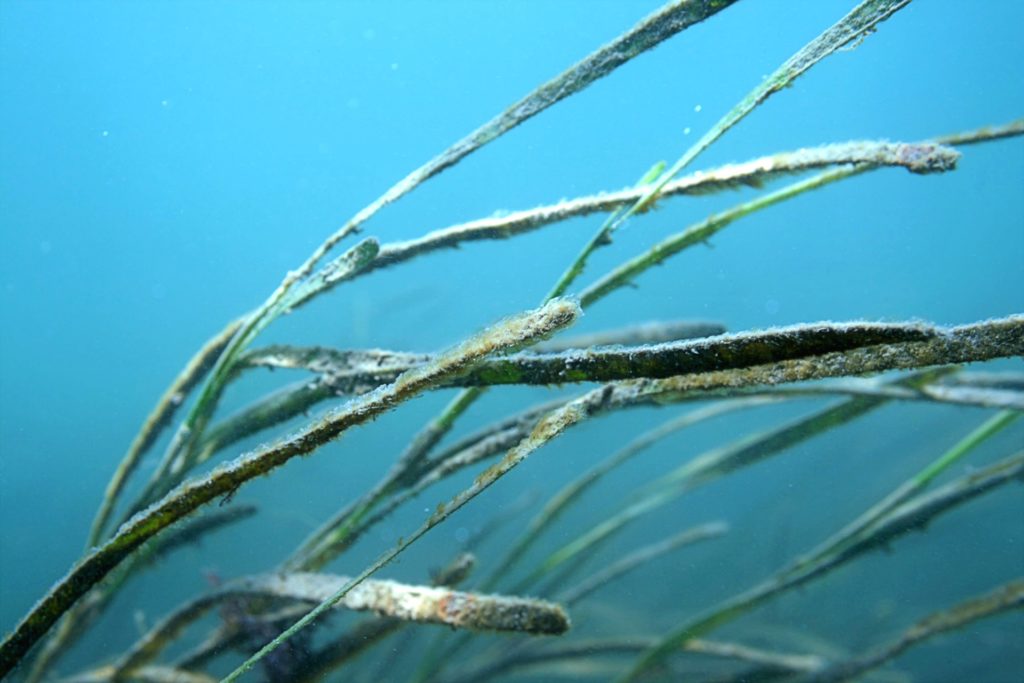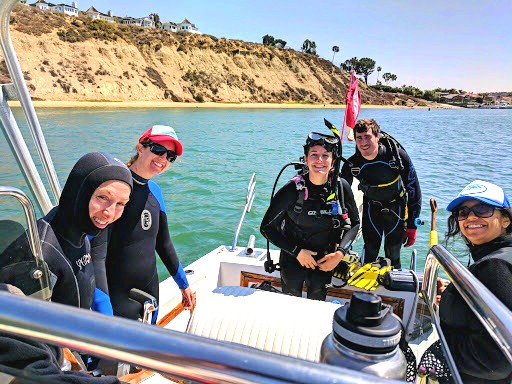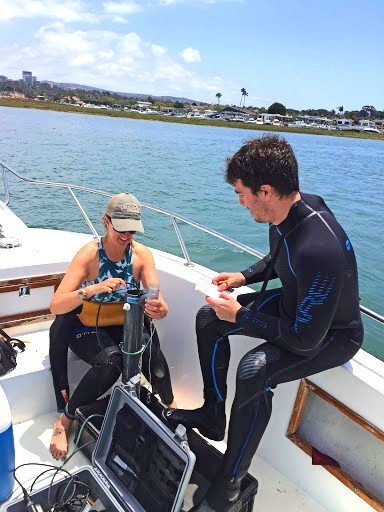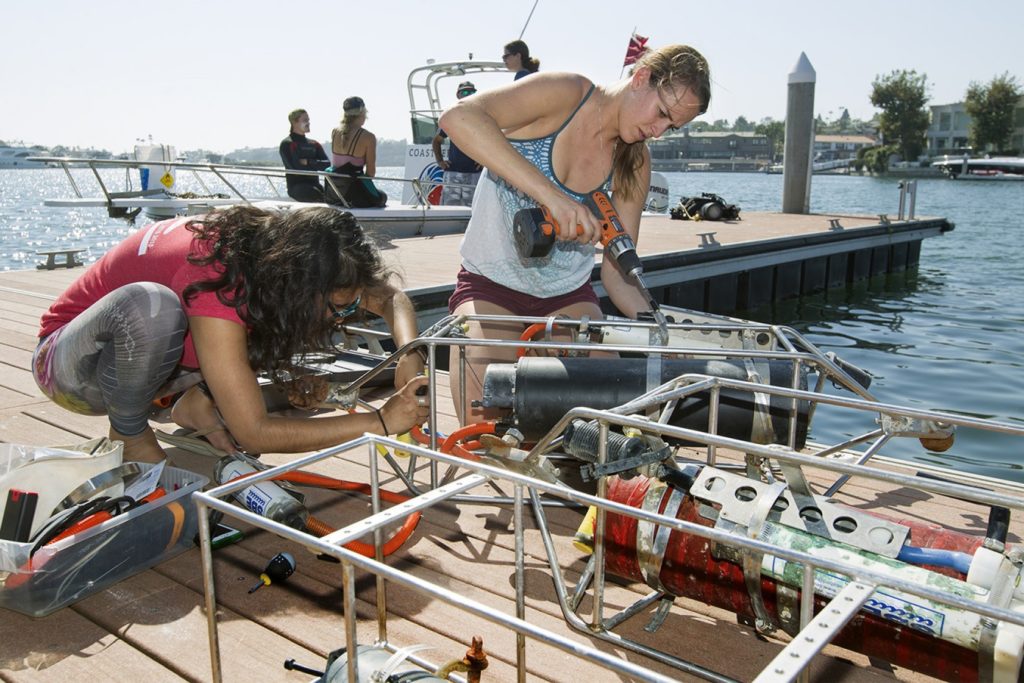Ocean Acidification and Seagrass
Seagrass beds have been declining along our coasts, despite being a critical habitat that offers refuge to many marine organisms. Research has shown that one acre of seagrass can help reduce the effects of carbon emissions as effectively as 40 acres of terrestrial forest (Jackson, 2014).
The problem:
Human generated carbon emissions can have profoundly negative impacts on our environment, including reducing the ocean’s pH level as CO2 enters seawater, resulting in waters becoming increasingly acidic, known as Ocean Acidification or OA. With potential local consequences to aquaculture operations and California ecosystems, continued research is needed into solutions.
LA Times article, photo: Kevin Chang.
 Seagrass
Seagrass
Seagrass, an underwater plant that uses photosynthesis, can consume carbon, effectively reducing the amount of CO2 in seawater and reducing the effects of OA. Seagrass can also “trap” carbon below the ground in a vital process called carbon sequestration.
Investigating seagrass meadows and their potential to “buffer” acidified water in the short term, as well as the benefits of protecting and restoring these meadows for long-term carbon storage is increasingly important given changing climate conditions.
 Research into solutions
Research into solutions
Orange County Coastkeeper is collaborating with researchers from UC Davis and UC Santa Cruz to investigate seagrass as a potential solution to ocean acidification.
Preliminary results show seagrass beds may provide a buffering influence on local water chemistry in the summer months due to higher rates of photosynthesis. However, many questions remain about the extent of this “buffering,” impacts on organisms in and around seagrass meadows, the extent of carbon sequestration, and how natural seagrass beds compare to restored beds.
 Methods
Methods
To tackle these questions we are using high-resolution sensors both inside and adjacent to the seagrass beds, as well as collecting water samples in bottles to analyze water chemistry in the laboratory.
We are examining seagrass beds in Upper Newport Bay in addition to other sites along the coast including Bodega Harbor and Tomales Bay, Elkhorn Slough and Mission Bay to include greater geographical context and compare natural vs. restored beds.
The sensors will determine the pH, temperature, salinity, and dissolved oxygen of the seawater inside and outside restored eelgrass. Through studying the water chemistry and sediment around these areas, we hope to answer the remaining questions about seagrass’ potential to help mitigate the effects of OA.
LA Times article, photo: Kevin Chang.
 Learn more:
Learn more:
Bodega Ocean Acidification Research (BOAR)
The Hill Ocean Climate Lab: Research
In the News:
Researchers in Newport optimistic that eelgrass can reduce carbon and acidity in seawater
Researchers to study whether seagrass could combat effects of climate change
Can eelgrass save our oysters from ocean acidification?







